
This resource supports high quality instruction and assessment.
- Subject:
- Creative Writing
- Education
- English Language Arts
- Higher Education
- Material Type:
- Assessment
- Primary Source
- Author:
- Katherine Oviatt
- Date Added:
- 07/11/2022

This resource supports high quality instruction and assessment.

These tasks, rubrics, and exemplars support high quality instruction and assessment practices.
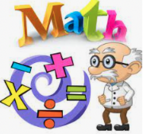
Horizon utilizes the SaskMATH Screeners which can ge found on this resource or can be downloaded directly from SaskMATH.The links to the Horizon Common Math assessments are also found in this resource. These are the Provincial math assessments that Horizon Teachers adapted for Horizon School Division. These can be further supported by the resources found on the Ministry Edonline site: https://www.edonline.sk.ca/ultra/organizations/_2869_1/cl/outline.

The Horizon Writing Protocol document outlines the processes, modes, tasks, rubrics and exemplars for determining benchmark growth in writing. Grades 4, 7, 9 tasks, rubrics and exemplars with other grades added as they are created.

This resource was created to support high quality writing instruction and assessment practices in grade 1.
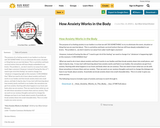
The purpose of us feeling anxiety in our bodies is so that we will ‘DO SOMETHING’ to try to eliminate the event, situation or thing that we are worried about. This is a primitive and basic survival instinct that we still have deeply embedded in our brains. The problem is…we don’t need to run away from saber tooth tigers anymore!
However, instead of having the idea of “I need to get rid of this feeling” we need to change it to “whatever is happening right at this moment, I CAN HANDLE that.”
What we need to do is learn about anxiety and how it works in our bodies and then break anxiety down into small pieces, and take it step by step. It may start with learning about how anxiety works and feels in our bodies; the sensations we get from anxiety. Starting with what happens in our brain and body when we are anxious. Then we need to learn what we can do with those sensations to lessen them and our anxiety. Then we work on our anxious thoughts and work to change the dialogue we have in our heads about anxiety. Essentially we break anxiety down into small chewable bites. This is in order to give you some success.

An emotional IQ survey.

In this problem-based learning activity, students learn how the intensity and distribution of rainfall and the structure of clouds are critical information for flight navigators. Students assume the role of climatologists and assist a newspaper reporter in determining the veracity of a pilot's statement about weather conditions he encountered in flight using TRMM (Tropical Rainfall Measuring Mission) satellite data. The resource includes teacher notes, student worksheet, glossary and an appendix introducing problem-based learning. This resource is the second of the 3-part learning module, Investigating the Climate System:Precipitation.

In this problem-based learning activity, students learn about weather forecasting and the role of the TRMM (Tropical Rainfall Measuring Mission) satellite in data collection. Assuming the role of climatologists, students assist a reporter in determining the accuracy of weather predictions published in The Old Farmer's Almanac. The lesson requires a street map of the local community, acetate sheets to cover the map, materials needed to build a homemade rain gauge, and sample pages of the almanac. Teacher notes, student worksheet, glossary and an appendix introducing problem-based learning are included. This resource is the first of the 3-part learning module, Investigating the Climate System: Precipitation.

This video lesson is on the details of cancer cell growth. How do cancer cells grow? How does chemotherapy fight cancer (and cause negative side effects)? The answers lie in cell division. George Zaidan explains how rapid cell division is cancer壽猻 "strength" -- and also its weakness.

In this demonstration, students explore the concept of greenhouse warming. They determine whether an increase in the amount of heat-trappping gases in the atmosphere can cause the temperature on Earth to rise. Students compare the relative heat retention in two experimental systems that are identical except for one being covered with plastic wrap. Materials required include two small aquarium tanks, plastic wrap, two clamp lamps with 60 watt bulbs, modeling clay, rocks and pebbles, and two thermometers. Teacher background information, student worksheets and a scoring rubric are included. This is Activity 1 of the module Too Many Blankets, part of the lesson series, The Potential Consequences of Climate Variability and Change.

This article from Edutopia examines "What happens when students can opt to skip tests and instead give oral presentations or create art to show what they know?"
This is a good article to get teachers thinking about assessment in new ways.

Learn how to take a running record on any book!
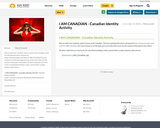
Discuss with your students what it means to be Canadian. Start by watching this short commercial https://www.youtube.com/watch?v=BRI-A3vakVg (You may choose to cut the beverage part out at the end or just use the sound at that point in the video.)
All other materials you need to do are attached including a rubric, parent letter, project planner with choices.

I Am Stronger is an initiative designed to stop the activities of bullying and cyber-bullying. This is done through awareness and education around cyber safety, the effects of bullying, and supporting youth-led initiatives.
I Am Stronger believes that the answers to solving the issues of bullying and cyber-bullying lie in the hearts and minds of those who experience it on a daily basis - the youth of today.
The Ministry of Education has partnered up with I Am Stronger to provide small grants of up to $1000 for youth-led initiatives to adress bullying and cyber-bullying within the province of Saskatchewan. The goal is to empower youth to take their ideas and turn them into positive action that can influence social change in schools, communities and online. The grant provides youth the opportunity to collaborate with others to find solutions to stop bullying, and then turn their ideas into action while inspiring others to do the same. We believe that together we can all make a difference.
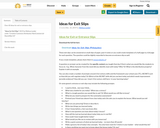
Over 60 ideas for exit or entrance slips.
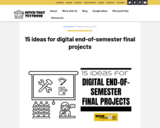
Final projects can help students summarize and review content from the entire semester. Plus, they can create fantastic products with what they've learned!
Projects let students take what they’ve learned, put it all together and show off a little of their own creativity and personality.
Options include:
1. Create a website
2. Create a screencast video
3. Make a single multimedia webpage
4. Connect with a cause
5. Create an infographic
6. Create a series of podcasts
7. Do a genius hour-style project
8. Create an annotated collection
9. Tell it as a story
10. Make an explainer video

Students use language and movement to explore accents in music.
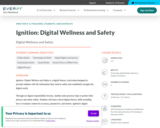
Ignition – Digital Literacy & Responsibility™ combines the power of cutting-edge instructional design, new media, and simulations to educate teens and empower them with the skill set to leverage technology safely and effectively. The four-hour curriculum, designed for students in grades 6 – 9—informs students about how technology works and provides an introduction to STEM careers. In addition to the modules, students apply their learning in virtual environments, demonstrating their mastery of issues such as privacy, security, cyberbullying, conducting online research, digital relationships, and the viral nature of the web.
Grades 6 to 9
This Course Covers
Digital Footprint
Internet Safety
Cyberbullying
Conducting Online Research
Digital Time Management
STEM Careers
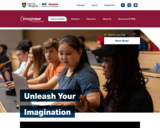
Created by the University of Regina Hill and Levene Schools of Business, the Imagineur program is made up of 8 online modules designed for high school and university students who are interested in becoming entrepreneurs. There is also an educator's kit that can be downloaded for each module.